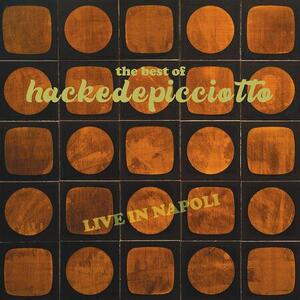
Keep An Eye Out
directed by Quentin Dupieux
starring Benoît Poelvoorde, Grégoire Ludig, Marc Fraize, and Anaïs Demoustier
Dekanalog Films
The hard-boiled American cop film reached its maximum gritty effect in the 1970s through the reckless exploits of the likes of the Sheriff Buford Pussers and Inspector Callahans, and with their immense popularity, the inevitable occurred—versions of these characters began appearing overseas in the plots of wildly violent poliziotteschi, better known as Euro-crime films. Offering a harder edge to counter the tan corduroy clad/soft rock Me generation, these Hollywood films and their imitators provided an endless array of exceedingly macho antics from peace officers, whose glaring ultra-macho behavior made for fertile ground for director Bertrand Blier and his surrealistic, comedic take on the crime genre, Buffet Froid.
For this abstractly dark and ferociously funny 1979 feature, Blier tapped his own father, veteran actor Bernard Blier, who had a long and storied career of portraying both hood and Gendarme, and teamed him up with France’s answer to Roy Scheider, Gerard Depardieu. Paired together as cop and suspected murderer respectively, Bernard and Gerard irreverently poked holes into crime film while simultaneously performing a societal gut check on the state of masculinity at the closing of the 1970s. In fact, throughout his entire career, Blier grossly and cleverly exaggerated the actions of his male lead characters and genre tropes to draw attention to the ridiculous attitudes of the day. Sensitive males were often reduced to sheepish cuckolds, while the dominant males were forced to take an ego trip that spun them out of control to identities somewhere between marauding beast and pretentious pseudo-intellectual, which usually left them either facile, insane, or dead. Blier was the perfect comedic director for that era, as he took aim at mainstream Hollywood’s depiction of leading men like Oliver Barrett IV or Mr. Majestyk.
In 2010, France’s heir apparent to Blier emerged when director Quentin Dupieux gave life to a serial killer car tire named Robert in his genre-destroying third feature, Rubber. Released during a time when any out-of-the-norm script brought to screen was haphazardly labeled as “Kaufmanesque,” Dupieux’s Rubber was praised, but wrongly classified in the Charlie Kaufman file. As his subsequent films would further bear out, Dupieux’s work explored much of the same ground as his forefather, Blier, and with a similar level of audacity, but by leaving France for the States, Dupieux sought to strike at the very heart of the Hollywood system that created many of the established film archetypes for men, right in its own home turf.
Rubber was followed up in 2012 by Wrong, a feature where Dupieux applied a healthy dose of the absurd to deconstruct the “lonely man with the trusty pet” film that was so popular in the 70s. 2013’s Wrong Cops distilled the classic ensemble L.A. police drama into ludicrous slices of cops on the loose mania, slathered with a thick glaze of Tim and Eric-style ickiness. Reality, in 2014, effectively looped five minutes of a Philip Glass score to amplify the monotonous futility behind a French director’s quest to make a Hollywood film that no one wants and that he might have apparently already made.
During his sojourn in the States, Dupieux tore through our filmmaking traditions as he developed some inventive visual themes of his own, which included multiple animals being utilized as goody bags and spy cameras, hulking men attempting to be masculine whilst attired in stained boyish tighty whities, and our idyllic safe little homes morphing into big scary question marks. Quentin did indeed have some fun here, but perhaps it was time for him to go home and pick on French cinema for a while.
Amazingly, 2018’s Au Poste! (Keep An Eye Out), which is finally enjoying a full virtual U.S. release this week, is Dupieux’s first feature length film shot in his native land. At the film’s lean 73 minute center is the classic seventies squad room interrogation setup where the highly domesticated, but heavily mustached Fugain (Grégoire Ludig) must endure the repetitive questions of Commissioner Buron (Benoît Poelvoorde), who suspects Fugain of murder after he foolishly reports the discovery of a dead body outside of his eerily quiet apartment building. I should stop here to write that as far as 70s squad rooms go, Dupieux’s set designer and wife, Joan Le Boru, has made this one a real gem, as it is expertly stocked with clanky oversized typewriters, hundreds of flickering fluorescent overhead lights, and pop-ins from polyester attired cops who look like they haven’t had a decent wink in weeks. It’s a bleak scene for the sleepy and hungry Fugain, who is forced to stay in his seat and regale Buron with multiple forced retellings of his boring evening at home with his sleepwalking wife which led up to his encounter with the corpse in question.
As Fugain’s stories repeatedly send the viewers for trips back to his poorly lit hovel, I was quickly reminded of Depardieu’s soulless, Brutalist apartment complex that provided the perfect dystopian setting for the random criminality and innumerous keystone cops’ shenanigans seen in the middle of Buffet Froid. In Keep An Eye Out, though, we have only keystone cop, Philippe (Marc Fraize), a one-eyed, ultra-paranoid hapless detective who commits a devastating blunder in Buron’s absence that Fugain will most likely be blamed for in the end. After Buron returns, Philippe is gone, and Fugain starts his testimony again, but with a sort of fear-induced and sleep and hunger deprived logic that leads to appearances from Philippe, as well as Philippe’s doting wife, into Fugain’s memories as he tries to articulate them yet again to Buron. As we watch Fugain struggle to keep his composure as his stories and current reality get interrupted with increasingly bizarre moments, we laugh as our curiosity grows, and we ponder his outcome.
In his previous film, Reality, Dupieux used his protagonist’s dreams to determine the direction of the narrative, but in Keep An Eye Out, we get the inverse, as Dupieux experiments with the way that the present plays into Fugain’s memory. Yet, despite their differing approaches, both films stress the futility of the practice of repackaging and repurposing known devices in cinema, with Dupieux, like Blier before him, twisting all of those elements that you’ve seen before, waving them loudly in front of you, and then pulling them apart or away, so that in the end, you have no choice but to laugh.
Keep An Eye Out opens on VOD on March 5th through the Brattle Theater in Cambridge, Massachusetts and in multiple other independent theaters across the U.S.












